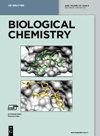光遗传学2.0:神经回路定量探测的挑战和解决方案。
IF 2.4
4区 生物学
Q3 BIOCHEMISTRY & MOLECULAR BIOLOGY
引用次数: 0
摘要
为了充分利用光遗传学的潜力,我们需要滴定和定制光遗传学方法来模拟自然电路功能。为此,需要满足以下先决条件:首先,我们不仅需要针对基因定义的神经元本身靶向视蛋白表达,而且需要专门针对功能节点。其次,我们需要评估光遗传调节的范围,即光遗传调节神经元的比例。第三,我们需要在闭环设置中集成光遗传控制。四是进一步开展安全稳定的基因表达和光传递,使光遗传学应用于临床。在这里,我们回顾了人类和啮齿动物大脑的这些概念。本文章由计算机程序翻译,如有差异,请以英文原文为准。
Optogenetics 2.0: challenges and solutions towards a quantitative probing of neural circuits.
To exploit the full potential of optogenetics, we need to titrate and tailor optogenetic methods to emulate naturalistic circuit function. For that, the following prerequisites need to be met: first, we need to target opsin expression not only to genetically defined neurons per se, but to specifically target a functional node. Second, we need to assess the scope of optogenetic modulation, i.e. the fraction of optogenetically modulated neurons. Third, we need to integrate optogenetic control in a closed loop setting. Fourth, we need to further safe and stable gene expression and light delivery to bring optogenetics to the clinics. Here, we review these concepts for the human and rodent brain.
求助全文
通过发布文献求助,成功后即可免费获取论文全文。
去求助
来源期刊

Biological Chemistry
生物-生化与分子生物学
CiteScore
7.20
自引率
0.00%
发文量
63
审稿时长
4-8 weeks
期刊介绍:
Biological Chemistry keeps you up-to-date with all new developments in the molecular life sciences. In addition to original research reports, authoritative reviews written by leading researchers in the field keep you informed about the latest advances in the molecular life sciences. Rapid, yet rigorous reviewing ensures fast access to recent research results of exceptional significance in the biological sciences. Papers are published in a "Just Accepted" format within approx.72 hours of acceptance.
 求助内容:
求助内容: 应助结果提醒方式:
应助结果提醒方式:


